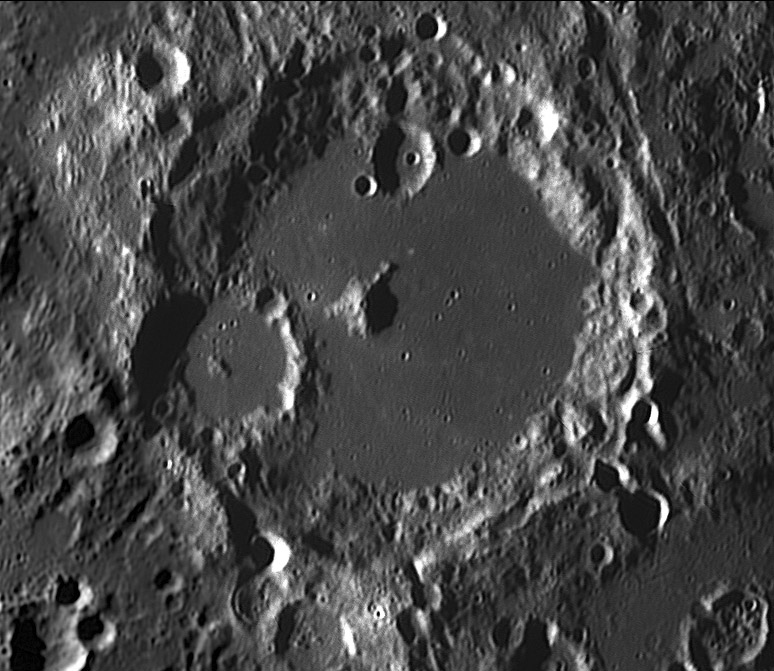January 7, 2019
Not Vesuvius
Originally published October 29, 2009

Albategnius image by George Tarsoudis
For a hundred years or more the origin of lunar craters was controversial. Many amateurs and professional students of the Moon assumed that lunar craters must be volcanoes because the only recognized terrestrial impact craters were small, like Meteor Crater, But there was equally poor understanding of terrestrial volcanoes. Most volcanic craters on Earth have small diameters, but the biggest overlooked disparity was that most volcanic craters were on tops of mountains, not flat on the surface of a plain. In fact, the small craterpit at the summit of the central peak of Albategnius looks like an excellent replica of terrestrial volcanoes such as Vesuvius. But it probably isn't. Lunar central peaks are rebounds of buried crustal, almost always non-volcanic, rocks. Also notice that besides the nice pit at the summit there are five or six other craters on the flanks of the peak. As an impact crater, the peak and walls formed at essentially the same time - and look, like the peak, the walls are full of small craters. Presumably, then, the summit pit is a random impact, unlikely as it seems.
Chuck Wood
Technical Details
Oct 10, 2009. 10 inch Newtonian telescope at f/6.3 + camera Fire-i 785 + filter red + barlow 3X.
Related Links
Rükl plate 44
The entire http://www.lunar-captures.com that this LPOD was snipped from
Yesterday's LPOD: Tall Tales
Tomorrow's LPOD: Poppie
COMMENTS?
Register, Log in, and join in the comments.



